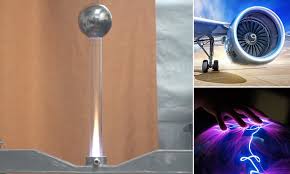
Breaking News
 Silver Madness: CME Margin Spike + What It Means Next - Mike Maloney
Silver Madness: CME Margin Spike + What It Means Next - Mike Maloney
 The 2025 Forensic Audit: Why the Silver Market Just Collapsed
The 2025 Forensic Audit: Why the Silver Market Just Collapsed
 How To Build A 100% SOLAR Food Dehydrator. Simple Off Grid Food Preservation - No Electricity.
How To Build A 100% SOLAR Food Dehydrator. Simple Off Grid Food Preservation - No Electricity.
 Roblox Takes 6 Billion Dollar Hit Protecting Predators Instead of Kids and Happy New Year brother
Roblox Takes 6 Billion Dollar Hit Protecting Predators Instead of Kids and Happy New Year brother
Top Tech News
 Laser weapons go mobile on US Army small vehicles
Laser weapons go mobile on US Army small vehicles
 EngineAI T800: Born to Disrupt! #EngineAI #robotics #newtechnology #newproduct
EngineAI T800: Born to Disrupt! #EngineAI #robotics #newtechnology #newproduct
 This Silicon Anode Breakthrough Could Mark A Turning Point For EV Batteries [Update]
This Silicon Anode Breakthrough Could Mark A Turning Point For EV Batteries [Update]
 Travel gadget promises to dry and iron your clothes – totally hands-free
Travel gadget promises to dry and iron your clothes – totally hands-free
 Perfect Aircrete, Kitchen Ingredients.
Perfect Aircrete, Kitchen Ingredients.
 Futuristic pixel-raising display lets you feel what's onscreen
Futuristic pixel-raising display lets you feel what's onscreen
 Cutting-Edge Facility Generates Pure Water and Hydrogen Fuel from Seawater for Mere Pennies
Cutting-Edge Facility Generates Pure Water and Hydrogen Fuel from Seawater for Mere Pennies
 This tiny dev board is packed with features for ambitious makers
This tiny dev board is packed with features for ambitious makers
 Scientists Discover Gel to Regrow Tooth Enamel
Scientists Discover Gel to Regrow Tooth Enamel
 Vitamin C and Dandelion Root Killing Cancer Cells -- as Former CDC Director Calls for COVID-19...
Vitamin C and Dandelion Root Killing Cancer Cells -- as Former CDC Director Calls for COVID-19...
Electric microwave plasma thruster could rival traditional jet engines

Plasma thrusters are already operational on spacecraft as a means of solar-electric locomotion, using xenon plasma, but such things are no use in the Earth's atmosphere, as accelerated xenon ions lose most of their thrust force to friction against the air. Not to mention, they only make a small amount of thrust in the first place.
This design, conceived and built by a team at the Institute of Technical Sciences at Wuhan University, uses only air and electricity, and appears to produce an impressive push that may see it become relevant to electric aircraft applications.
The device works by ionizing air to create a low-temperature plasma, which is blown up a tube by an air compressor. Part way up the tube, the plasma is hit with a powerful microwave, which shakes the ions in the plasma about violently, crashing them against other non-ionized atoms and vastly increasing the temperature and pressure of the plasma.



